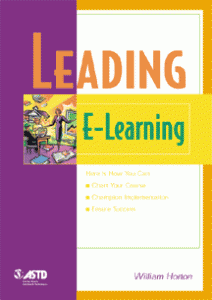 I began writing this book 30 years ago. While still an undergraduate, I took a job at the Massachusetts Institute of Technology’s Center for Advanced Engineering study, teaching a course in using computers to simulate social systems. The course required students, mostly midcareer engineers and government officials, to conduct simulations on teletype terminals connected to MIT’s timesharing system. When I signed the contract, I did not realize that the course did not exist yet and that I would have to develop it. The only way I could stay ahead of the students was to put all course materials on the computer and let students print them out as they needed them.
I began writing this book 30 years ago. While still an undergraduate, I took a job at the Massachusetts Institute of Technology’s Center for Advanced Engineering study, teaching a course in using computers to simulate social systems. The course required students, mostly midcareer engineers and government officials, to conduct simulations on teletype terminals connected to MIT’s timesharing system. When I signed the contract, I did not realize that the course did not exist yet and that I would have to develop it. The only way I could stay ahead of the students was to put all course materials on the computer and let students print them out as they needed them.
As the course went on, students came to rely less and less on me as an instructor. Our lecture segments transformed into active discussions. Students became engaged in the exercises, trying variations and experiments on their own. And, my course design evolved to find new ways to challenge and enlighten students. In even this crude prototype of what we would today call blended e-learning benefits were obvious if only to the tiny fraction of people with access to the necessary technology.
It has taken a long time, but finally many organizations have access to the powerful computers and networks that enable e-learning to take place. Today, as an e-learning consultant, I serve as an organizational midwife, helping deliver healthy e-learning programs. This book represents the best practices of hundreds of organizations that have moved into the e-learning age.
Who Is This Book for?
This book is for people who want to lead their organization into the e-learning age. It is for those who want to see their organization use e-learning effectively and wisely, not just “do e-learning.” It is for those who are willing to honestly deal with the complexities of e-learning to achieve its considerable potential. Moreover, it is for those who do not want suppliers and external consultants to take charge of the change, instead they want to lead their organizations into the realm of e-learning. These people are
- training managers
- team leaders of e-learning initiatives
- people who want to be a training manager or a team leader
- HR executives in charge of performance improvement or knowledge
- management
- trainers who want to launch new careers
- anyone who wants to contribute actively to this fundamental shift in the way
- training is performed.
What Will This Book Do for You?
Your organization may be a training department within a large corporation, a stand-alone training firm, or a group that wants to use e-learning to expand your current offerings. Whatever your title and whatever your group, this book can guide you in creating your strategy and tactics to move your organization into e-learning.
By reading this book, thinking about the issues it raises, completing the included activities, and consulting the companion Website, you will develop an e-learning strategy that fits the needs of your organization. You will assemble a plan to mastermind this momentous change—with the help of others. This book will provide you with a broad perspective of how e-learning fits into other corporate activities. It exposes you to the rich breadth of e-learning, the many forms it can take, and the tasks necessary to bring it about. This book previews other books in the e-learning arena and supplies you with a vocabulary of concepts and terms so you can deal with specialists and suppliers as an equal. It spells out a practical, common-sense, needs-based approach to corporate change.
What’s Special About This Book?
This book is organized to make your learning experience as effective as possible. It is designed for quick skimming. Chapters and headings are organized around questions commonly asked by those making the transition to e-learning. This book is very action oriented. At the end of each chapter, “Your Turn” sections guide you in applying what you have just read to your organization’s e-learning plan.
This book draws on the experiences of hundreds of pioneers who developed the technology, instructional design, and business models that make e-learning a reality. Additionally, it draws on those brave souls who shared details of their failures, too. In writing this book, I was less of an author and more of a cartographer, crafting a map, not just from my own experiences, but from reports of explorers who have ranged the landscape. Use this map to chose your path and guide your explorations.
William Horton
August 2001